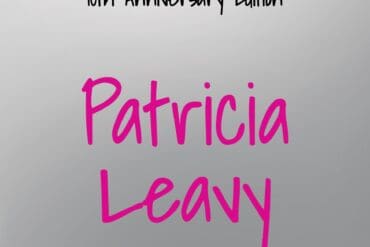How to Make Students Laugh in Spanish: Some Serious Considerations
Author’s Memo
How to make students laugh in my Spanish classes rarely crosses my mind during lesson planning. I focus more on the serious topics we tackle: immigration policies, unaccompanied minors, racism, deportations, health inequities. However, this autoethnographic piece helped me recognize the importance of levity even when the intellectual content is heavy.
I studied Spanish from high school to my Ph.D. As a graduate student, I began teaching Spanish –a career that spans more than 30 years at this point– and met my Italian husband whose language I also learned. However, for many years I did not fully comprehend the privilege I brought to my role as a language student, then as a language educator. I didn’t have to. After all, Spanish was taught as mere puzzle pieces that students snap together as they learn. Sure, textbooks incorporated cultural tidbits about the Spanish-speaking world but without tackling the fraught nature of Spanish in the U.S.
‘However, this autoethnographic piece helped me recognize the importance of levity even when the intellectual content is heavy.
Now, I more fully grasp how much my Spanish is intertwined with both my identity and my privilege. Because I first encountered Spanish in high school, I acquired an academic register that holds social and cultural capital. My proficiency took root when I studied abroad in Spain for one year, an experience my parents could afford, and all these decades later, that immersion in European Spanish still shows in my pronunciation—the accent of the colonizer. Upon my return to Spanish studies in US higher education, I found a perfect fit within a curriculum tilted toward Spanish peninsular studies. Finally, as an educator, I was trained to use the standard of academic Spanish to make judgements about my students’ Spanish, including subtracting points for many Latinx students’ “misspelling” patterns that are typical of people who learn Spanish informally, among family.
Once I started looking hard at myself, other privileges surfaced. Because I am White, people praise my Spanish (and my Italian, another European language), whereas people who are racialized as Latinx are too often on the receiving end of verbal or even physical aggression for speaking Spanish aloud in the U.S. As a documented U.S. citizen, my passport privilege not only has allowed me to travel through Latin America and expand my Spanish, it also allows me to protest and speak up publicly for linguistic, immigrant and racial justice, unafraid of reprisal.
Now I try to help my students better understand Spanish as both beautiful and politicized. I no longer just grade my students Spanish; I honor their language practices and heritage. This piece about laughter in my classroom is another step in my journey toward understanding the intersections of my Spanish, my Whiteness and my teaching.

How to Make Students Laugh in Spanish: Some Serious Considerations
I stood at the front of the classroom, my back to the screen where my students watched the Puerto Rican comedian and YouTuber, LeJuan James, play multiple parts in a very short video called “When Hispanic Families Visit You in the Hospital.” The comic plays the role of a young man in his hospital bed, alone and bored. He also dresses as the mom and implores the nurse to let her son see his family. Finally, we see LeJuan in scrubs and a long blonde wig telling the mom, “Listen, I’ll tell you what. I’m gonna make an exception for you. … I’ll let you get one more family member in there.”
Given the go-ahead, the mom puts two fingers to her lips and whistles sharply. A long line of relatives appears in the hospital hallway, everyone bearing food or gifts and loudly greeting each other in Spanish, hugging and kissing as they file into the patient’s room.
While my students watched the video, I watched them. Some smiled. Others seemed unsure how to react. When the blonde nurse who only speaks English says, “Why is your family so big?” I cracked up, signaling that we could laugh today in our normally serious classroom.
The course was titled “Health Professions and US Latinx Communities.” Throughout the semester we explored the role of language and culture in healthcare, and I braided in lessons about the impacts of COVID-19 on our local Latinx immigrant community. Plus, we did this all in Spanish. This course was no laughing matter, and bringing humor into that day’s lesson was tricky.
‘I braided in lessons about the impacts of COVID-19 on our local Latinx immigrant community.
Many students in the class were second language (L2) learners who, like me, did not grow up with Spanish in the home. With them, humor in the classroom often flops because you need a high level of proficiency and cultural knowledge to catch the play on words or insider jokes that many comics use. Even though I speak Spanish fluently, I avoid stand-up comedy in Spanish because it frustrates me to understand everything except the punchline. So before pushing play, I explained some of the characteristics of Puerto Rican pronunciation and summarized in plain terms the characters and action they were about to see. Part of LeJuan’s humor is his translanguaging, gliding between English and Spanish with ease, and I hoped this scaffolding would make the Spanish in the video more comprehensible to my L2 learners.
About half my students that day were heritage language learners, people who grew up with Spanish in their family but whose schooling was primarily in English. Most of these students catch jokes in Spanish with ease, but that doesn’t guarantee they will laugh. Jokes about marginalized groups, especially based on cultural stereotypes, fall flat with most students today, and rightly so. The ending of the video I showed skirted politically incorrect territory: at the end, Latin music blares through the hospital halls, and everyone in the patient’s room is dancing merengue around the IV pole.
‘With them, humor in the classroom often flops because you need a high level of proficiency and cultural knowledge to catch the play on words or insider jokes that many comics use.
I brought humor into the class for a serious reason. LaJuan’s videos exemplify a concept from that week’s reading assignment: studies of provider-patient communication show that Spanish-speaking healthcare providers use humor with their Spanish-speaking patients as one strategy to create homophily, a sense of shared cultural identity. LeJuan James’ videos show that strategy in action, and thousands of comments on that video confirm that his humor evokes a cultural connection. So after watching the video, I placed students in pairs and asked them to analyze the cultural values reflected in the skit and their connections to healing and wellness.
Next we watched another LeJuan James video set in a hospital room, this time centered on a young woman about to give birth, surrounded by her grandmother, mother, aunt and cousin, all played by LeJuan. Emotions run high among the women in the video, but the laughter in my classroom was again scattered at best. My students became more animated, however, when they turned to a new partner and analyzed the gender roles and intergenerational ties reflected in this video.
I planned to show one more video but wondered if I should cut and run on this lesson plan. After all, famous comedians like Jerry Seinfeld and Chris Rock say college students today are too politically correct for standup routines. Students at the high school Dave Chapelle once attended openly challenged his humor when he visited and balked at renaming the school theater for him. Maybe I was sticking my neck out too far as a White woman showing iffy skits about “Hispanics” in class.
‘…Spanish-speaking healthcare providers use humor with their Spanish-speaking patients as one strategy to create homophily, a sense of shared cultural identity.
“Vamos a ver uno más,” I told students, deciding to take the risk and bringing their attention back to the screen where I projected another short LeJuan James video related to health. I had given up hope that students would laugh out loud at the video, but after watching, I wanted them to question its presentation of a traditional notion of masculinity and its ties to health.
All semester I had endeavored to create an inclusive classroom, especially regarding gender and sexuality, because outside our cocoon, women in the U.S. were losing rights over their bodies, states were trying to erase trans people and the Supreme Court’s Dobbs decision made it clear that even same-sex marriage was now up for grabs. In contrast, I used gender-neutral Spanish in my slides, like writing “compañere” instead of “compañero/a.” During one class we listened to a podcast about mental health for Latinx communities, including episodes about sexuality and stories of coming out of the closet. We didn’t shy away from women’s reproductive health: we discussed menstruation and watched videos of indigenous women’s birthing practices.
‘All semester I had endeavored to create an inclusive classroom, especially regarding gender and sexuality, because outside our cocoon, women in the U.S. were losing rights over their bodies, states were trying to erase trans people and the Supreme Court’s Dobbs decision made it clear that even same-sex marriage was now up for grabs.
In this last video, LeJuan plays a young man in the kitchen, asking his father for pills to cure his headache. The father (again, LeJuan plays all the roles in this skit) tells his son that he needs to be more of a man and use the product that keeps him youthful and vigorous. In walks LeJuan wearing blue leotards, an oversized Vick’s Vapor Rub bottle around his torso and a blue lid on his head like an extra-wide brimmed hat. He explains to the son how to cure anything, including a broken heart.
“¿Te duele el corazón? ¿Te dejó la mujer? No te preocupes. Tú coges un poco de Vick’s. Te lo pones en el pecho, acuestas a dormir. Te despiertas por la mañana, ¡te olvidaste de la mujer!” Just put Vick’s on your chest at night, and the next morning that woman will be gone from your mind.
In the back of the class, there was laughter.
I looked up. Students turned in their seats to see what was happening. In the last row, a young Latinx woman giggled as she lifted her purse from the floor, unzipped it, pulled out a bottle of Vick’s and raised it in the air.
“I carry this with me,” she said.
Finally, everyone in the class was laughing.
Credits
Photo of a mug with a Spanish sentence on it for Pexels by Elle Hughes
Featured image by Sean Benesh for Unsplash
Learn More
New to autoethnography? Visit What Is Autoethnography? How Can I Learn More? to learn about autoethnographic writing and expressive arts. Interested in contributing? Then, view our editorial board’s What Do Editors Look for When Reviewing Evocative Autoethnographic Work?. Accordingly, check out our Submissions page. View Our Team in order to learn about our editorial board. Please see our Work with Us page to learn about volunteering at The AutoEthnographer. Visit Scholarships to learn about our annual student scholarship competition.
I use autoethnography to understand myself as a multilingual person and language educator. I teach Spanish at the University of Illinois, Urbana-Champaign.










